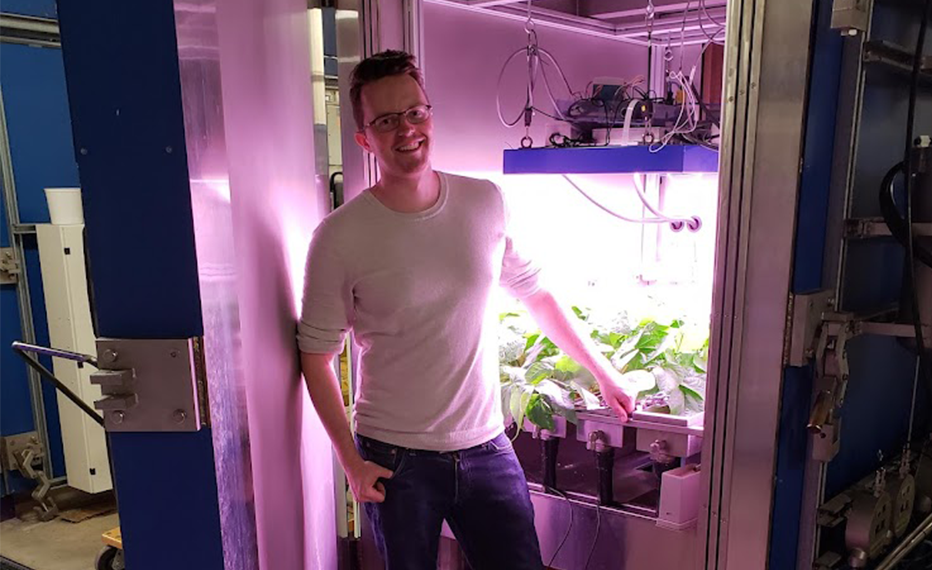Students improving life: Using new tech to improve plant agriculture research

Jared Stoochnoff is a graduate student in the School of Environmental Sciences (SES). His research takes place in the Controlled Environment Systems Research Facility (CESRF) under the supervision of Dr. Mike Dixon and Dr. Thomas Graham, professors in SES.
The facility is equipped with plant growth analysis chambers which allow researchers to study plants grown under extreme conditions posed in space or harsh environments on Earth.
“One can manipulate the environment conditions within the plant growth analysis chamber, like the temperature, humidity, CO2 concentration, light environment which includes the colour, intensity, photo period and the positioning and see how it's going to affect the gas exchange rates of the plants,” says Jared. “So, you can calculate photosynthetic rates and transpiration rates, to figure out what the optimal environment condition recipe is for the production of that specific plant.”
After completing his master’s in SES, he decided to pursue his PhD and continue to contribute to research, this time with a focus on growing green beans in vertical farming systems.
Vertical farming is the practice of growing crops vertically, often in multiple layers and controlled-environment systems. These systems optimize space, plant growth, and utilize soilless farming techniques and aim to minimize resources while increasing crop yields.
He illustrates that most vertical farms today are focused primarily on growing leafy greens and microgreens, but Jared says there is an issue surrounding that approach.
“They have very simple environment requirements, the plants grow very quickly, are very small and short in stature,” says Jared. “The issue with just producing microgreens and leafy greens is they don't have a lot of nutritional value. They're good for you, but people generally don’t consume them in enough quantity to contribute significantly to your diet.”
Jared’s project focuses on beans from seed to harvest, which takes approximately 60 days.
“My project is moving towards growing green beans, specifically a bush variety of beans, as a plant-based protein,” says Jared. “We are hoping that this crop will contribute more to the human diet in comparison to what is growing in vertical farms today.”
While Jared is focusing on bush beans, other graduate students are exploring new crops in these systems such as medicinal crops, strawberries, and other vegetables.
To improve his research process, Jared developed a technology to execute the experiments for his thesis. The new technology was partially funded by the NSERC Collaborative Research and Development (CRD) grant.
“I set out to push the boundaries of controlled environment lighting research. To do this, I developed a custom LED lighting control system and real-time CO2 dynamics software that made these complex experiments possible.”
Jared explains that the technology has the potential to generate more precise data across CESRF.
“I created my own cell phone app to control the chambers. It’s fitting since I'm really interested in digital agriculture, precision agriculture, and innovation,” says Jared. “It has created an easier and more intuitive way for researchers to use their equipment as opposed to what we were using before.”
This technology has enhanced how data is collected from the plant growth analysis chambers and will significantly contribute to research in the field.
“We are currently developing a new plant growth analysis chamber and the environment control software that goes with it. The new system will incorporate all the lessons learned during my PhD and allow knowledge transfer to the next generation of CESRF graduate students.”